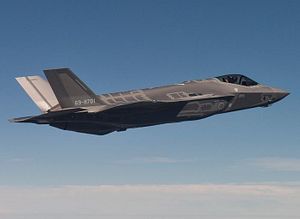By Robert Farley
In the context of ongoing discussions of Chinese technology theft, it’s worth revisiting how the Soviet Union sought to acquire U.S. technology during the Cold War. A CIA report on the acquisition efforts of Soviet and allied intelligence services from 1982 (declassified in 1999) sheds light on the Soviet effort, and offers an opportunity to contrast that effort with modern-day China’s. While the Soviets had some advantages, the lack of dynamism in their economy and the lack of extensive economic contacts with the West left them unable to take advantage of technological acquisitions to the same extent as contemporary China.
The Soviet effort was immense and was centrally directed, using communications intercepts, open source collection, and human intelligence assets. It took advantage of scientific and technical exchanges between East and West, multilateral scientific organizations, and communist-owned firms in Western countries. It placed agents in industrial, commercial, and political positions, and sought to acquire tacit knowledge (or “know how”) associated with industrial processes that could increase the quality and reduce the cost of military equipment. Most of the successful acquisition operations happened outside the United States, with the Soviets taking advantage of local firms in countries that had more extensive trade connections with the Eastern Bloc than did the United States. This was a necessary cost of both the arms export policies of the United States and the decision to pursue creation of a broad, multinational industrial base, both of which contributed to the transfer of technology.
But there were several significant differences between Soviet espionage efforts and those of the Chinese today, one of which lies in the use of proxies. While the Soviet Union could rely on the cooperation of an array of Eastern European intelligence organizations, China’s intelligence services are more constrained. The Soviets regularly took advantage of asymmetries in the legal structure of knowledge protection, for example sanctions that prohibited exports to the USSR but left out the Eastern Europeans. While the Soviets concentrated on the acquisition of specific military technologies, in addition to technologies associated with reducing the cost of defense production, Chinese espionage has also been driven by an interest in accelerating the development of civilian technology, allowing it to capture significant portions of the consumer market as well as develop its military capabilities. The two dovetail nicely in many areas, especially insofar as Chinese firms (like Huawei) can help lay the foundations of internet infrastructure.
Moreover, the Chinese have vastly more sophisticated means of acquiring technology at their disposal than did the Soviets. Soviet espionage took place in a radically different information environment than that which exists today. The biggest difference, of course, is the central position of China to the world economy. China has become part of supply chains that feed technology producers around the world, and its universities and students have become key participants in global knowledge production. This offers China’s military, intelligence services, and industrial firms ready access to technology streams that the Soviets struggled to uncover.
In short, Soviet efforts to steal technology from Europe, Japan, and the United States were serious, even if they often ended in failure for reasons that Andrea and Mauro Gilli have detailed. These efforts spurred efforts at innovative “knowledge statecraft” on the part of the United States designed to prevent the further loss of technology to the Soviets. In the end, however, despite generating serious concern in Washington, the Soviet economy could not incorporate Western technology at a sufficient rate to “catch up” with the United States, and instead fell increasingly far behind on both the civilian and military sides. China’s more multi-faceted approach and more dynamic economy pose a much greater threat.

No comments:
Post a Comment